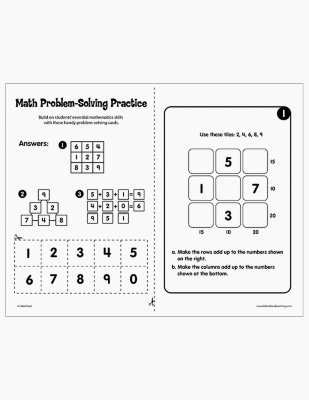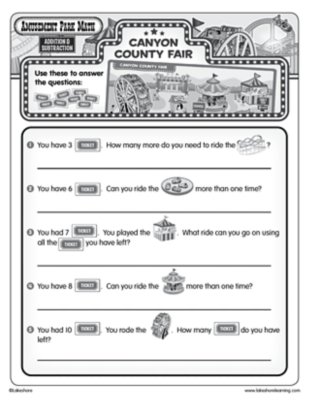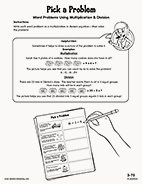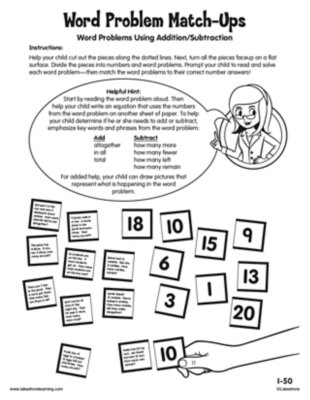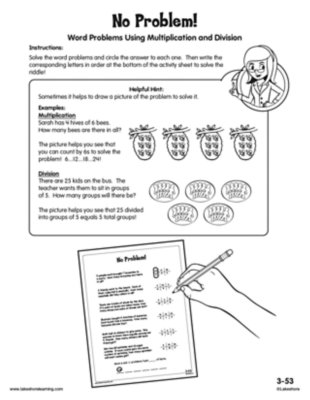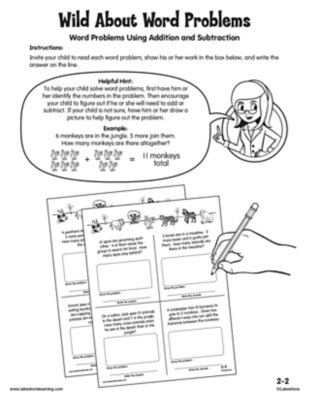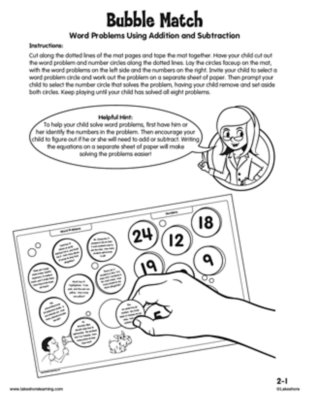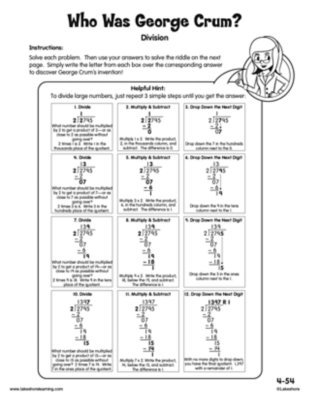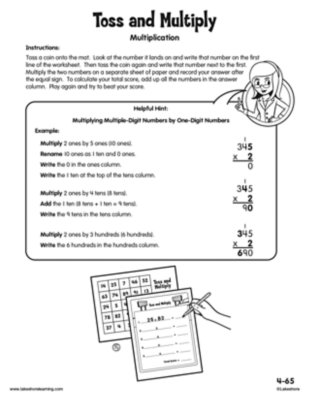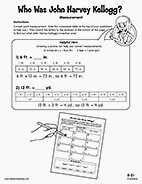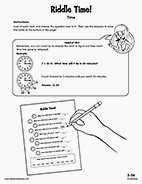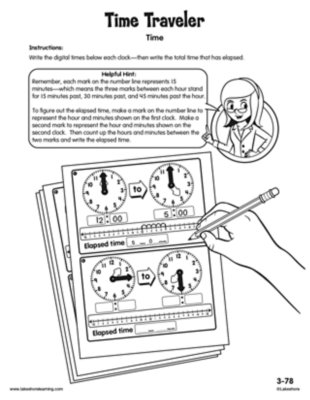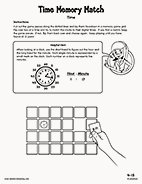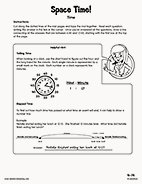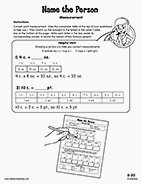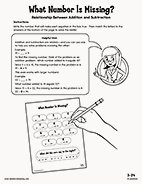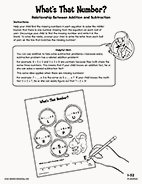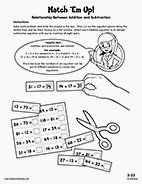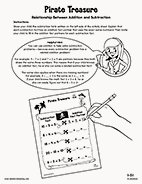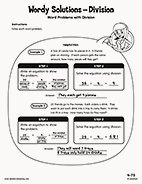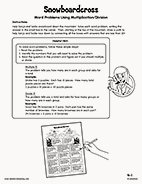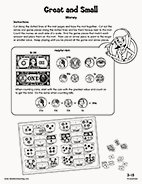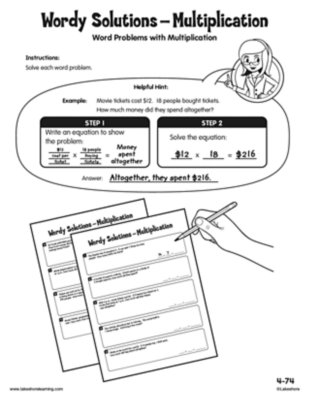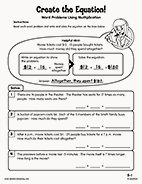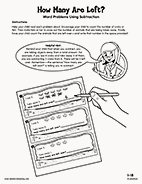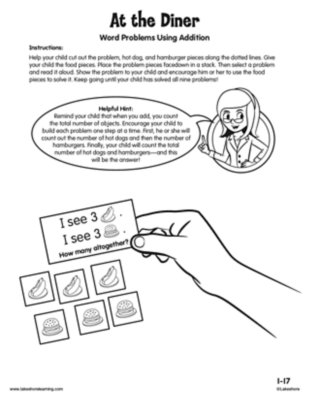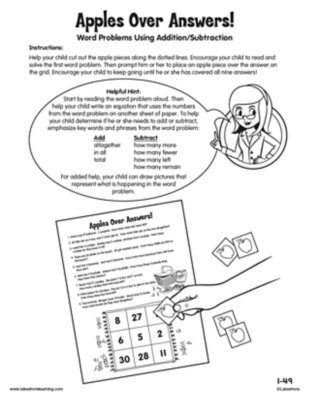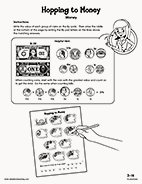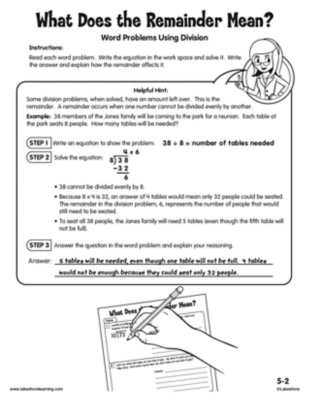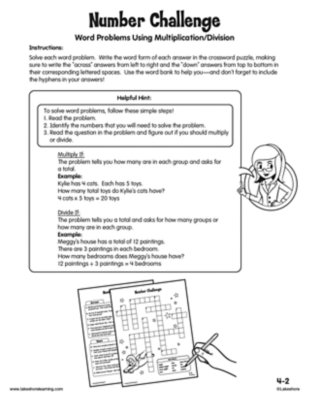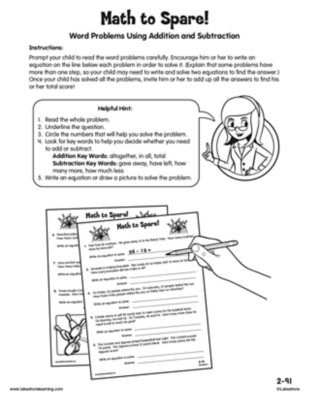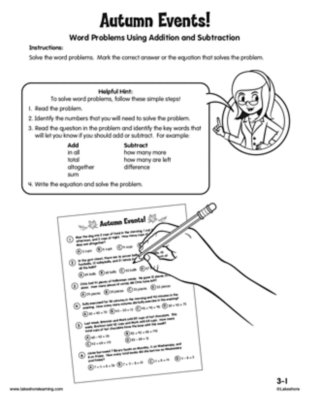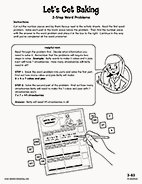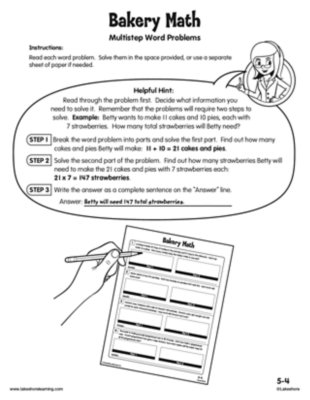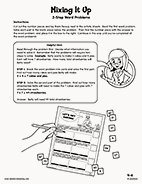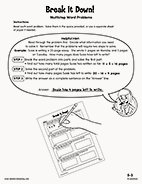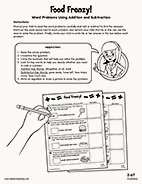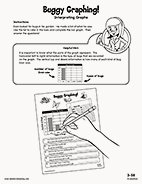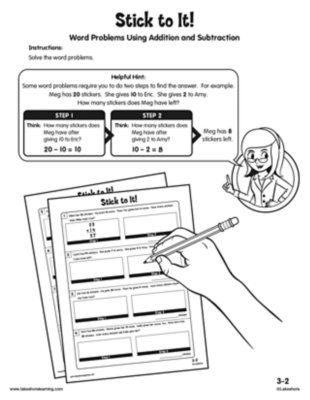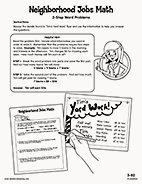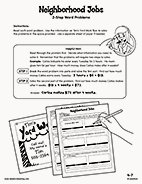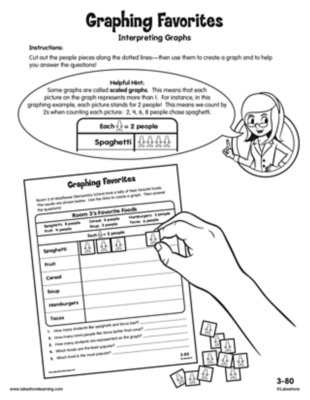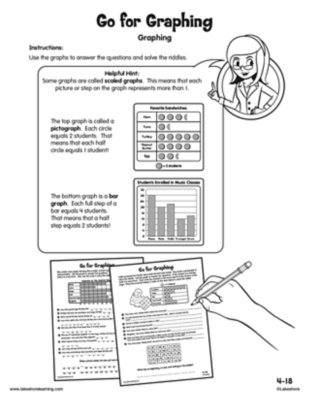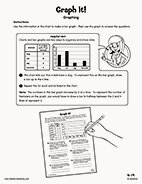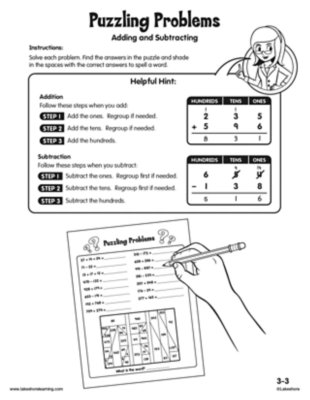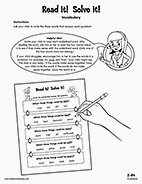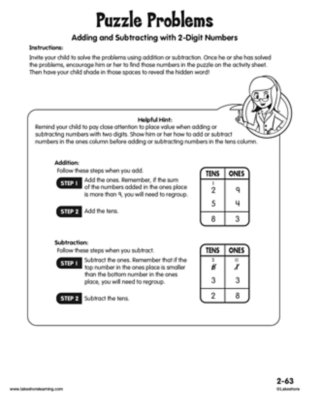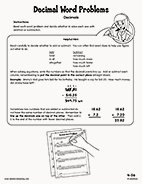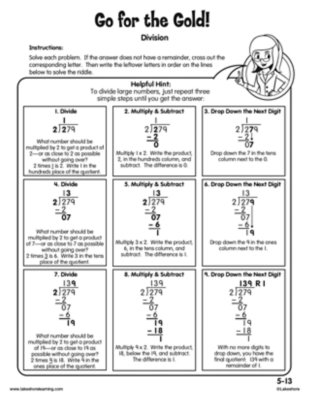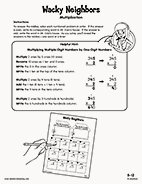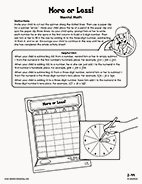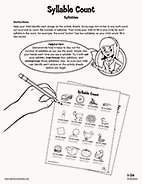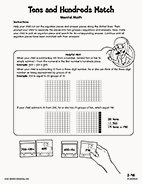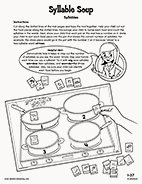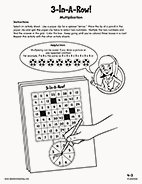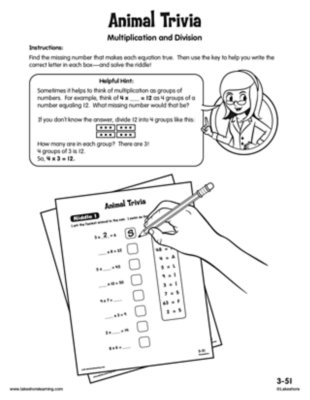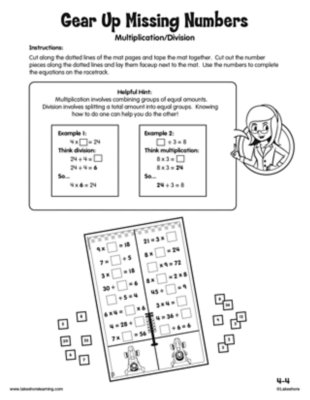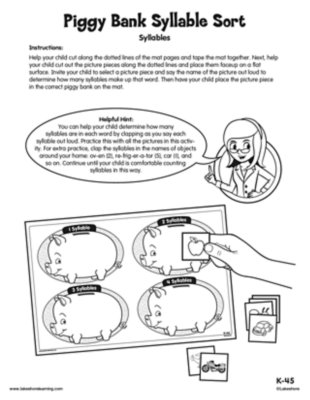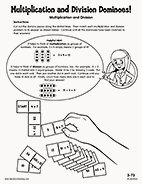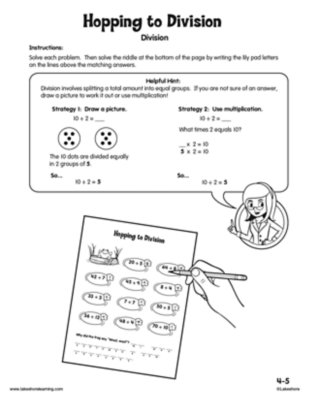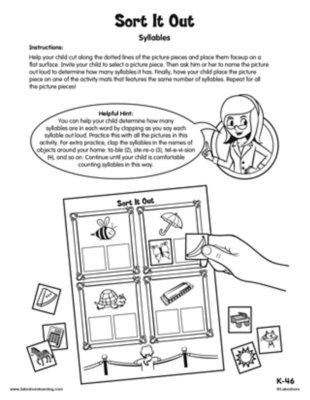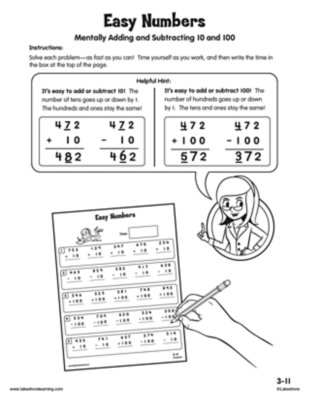Narrow by Grade
Grade
65 results for "problem solving stem kits"
During third grade, your child will learn to solve word problems involving multiplication and division within 100.
View worksheetDuring first grade, your child will be asked to solve word problems that involve adding and subtracting within 20.
View worksheetDuring third grade, your child will learn to solve word problems involving multiplication and division within 100.
View worksheetWhen entering second grade, your child should be able to solve word problems that involve adding and subtracting within 20. This includes solving problems with up to three numbers. For example, 5 + 7 + 3 = 15.
View worksheetWhen entering second grade, your child should be able to solve word problems that involve adding and subtracting within 20. This includes solving problems with up to three numbers. For example, 5 + 7 + 3 = 15.
View worksheetDuring fourth grade, your child will multiply a number with up to four digits by a one-digit number and multiply two-digit numbers by two-digit numbers. Your child will also divide numbers with up to four digits by a one-digit number, including solving problems with remainders.
View worksheetDuring fourth grade, your child will multiply a number with up to four digits by a one-digit number and multiply two-digit numbers by two-digit numbers. Your child will also divide numbers with up to four digits by a one-digit number, including solving problems with remainders.
View worksheetWhen entering third grade, your child should be able to solve problems using information from line plots, picture graphs and bar graphs.
View worksheetWhen entering fifth grade, your child should be able to solve problems involving measurement and conversion of measurement.
View worksheetWhen entering third grade, your child should be able to solve problems using information from line plots, picture graphs and bar graphs.
View worksheetDuring third grade, your child will learn to tell and write time to the nearest minute. Your child will also learn to solve problems in which time has elapsed. For example, “The movie started at 5:15 p.m. It was 1 hour and 20 minutes long. What time did the movie end?”
View worksheetDuring third grade, your child will learn to tell and write time to the nearest minute. Your child will also learn to solve problems in which time has elapsed. For example, “The movie started at 5:15 p.m. It was 1 hour and 20 minutes long. What time did the movie end?”
View worksheetWhen entering fourth grade, your child should know how to tell and write time to the nearest minute. Your child should also be able to solve problems in which time has elapsed. For example, “The movie started at 5:15 p.m. It was 1 hour and 20 minutes long. What time did the movie end?”
View worksheetWhen entering fourth grade, your child should know how to tell and write time to the nearest minute. Your child should also be able to solve problems in which time has elapsed. For example, “The movie started at 5:15 p.m. It was 1 hour and 20 minutes long. What time did the movie end?”
View worksheetWhen entering fifth grade, your child should be able to solve problems involving measurement and conversion of measurement.
View worksheetWhen entering third grade, your child should be able to fluently add and subtract within 100 using their knowledge of the relationship between addition and subtraction. For example, your child can solve the problem 100 — 15 = 85 by understanding that 85 + 15 = 100.
View worksheetDuring first grade, your child will learn that addition and subtraction are closely related. For example, your child will solve the problem 10 — 2 = ? by understanding that 8 + 2 = 10.
View worksheetWhen entering third grade, your child should be able to fluently add and subtract within 100 using their knowledge of the relationship between addition and subtraction. For example, your child can solve the problem 100 — 15 = 85 by understanding that 85 + 15 = 100.
View worksheetDuring first grade, your child will learn that addition and subtraction are closely related. For example, your child will solve the problem 10 — 2 = ? by understanding that 8 + 2 = 10.
View worksheetDuring fourth grade, your child will solve word problems that involve multiplication and division.
View worksheetWhen entering fourth grade, your child should know how to solve word problems involving multiplication and division within 100.
View worksheetWhen entering third grade, your child should be able to solve word problems that involve money, including dollar bills, quarters, dimes, nickels and pennies.
View worksheetDuring fourth grade, your child will solve word problems that involve multiplication and division.
View worksheetWhen entering fifth grade, your child should be able to multiply and divide to solve word problems and be able to solve multistep word problems that involve multiplication and division.
View worksheetWhen entering first grade, your child should be able to solve word problems that involve adding or subtracting within 10.
View worksheetWhen entering first grade, your child should be able to solve word problems that involve adding or subtracting within 10.
View worksheetDuring first grade, your child will be asked to solve word problems that involve adding and subtracting within 20.
View worksheetWhen entering third grade, your child should be able to solve word problems that involve money, including dollar bills, quarters, dimes, nickels and pennies.
View worksheetWhen entering fifth grade, your child should be able to multiply and divide to solve word problems and be able to solve multistep word problems that involve multiplication and division.
View worksheetWhen entering fourth grade, your child should know how to solve word problems involving multiplication and division within 100.
View worksheetDuring second grade, your child will learn to solve one- and two-step word problems involving addition and subtraction within 100.
View worksheetWhen entering third grade, your child should be able to solve one-step and two-step word problems involving addition and subtraction within 100.
View worksheetDuring third grade, your child will learn to solve two-step word problems involving addition, subtraction, multiplication and division.
View worksheetWhen entering fifth grade, your child should be able to solve multistep word problems using addition, subtraction, multiplication and division, including problems with remainders.
View worksheetWhen entering fourth grade, your child should know how to solve two-step word problems involving addition, subtraction, multiplication and division.
View worksheetWhen entering fifth grade, your child should be able to solve multistep word problems using addition, subtraction, multiplication and division, including problems with remainders.
View worksheetDuring second grade, your child will learn to solve one- and two-step word problems involving addition and subtraction within 100.
View worksheetDuring third grade, your child will learn to use bar graphs to solve one- and two-step problems asking “how many more” and “how many less.”
View worksheetWhen entering third grade, your child should be able to solve one-step and two-step word problems involving addition and subtraction within 100.
View worksheetDuring third grade, your child will learn to solve two-step word problems involving addition, subtraction, multiplication and division.
View worksheetWhen entering fourth grade, your child should know how to solve two-step word problems involving addition, subtraction, multiplication and division.
View worksheetDuring third grade, your child will learn to use bar graphs to solve one- and two-step problems asking “how many more” and “how many less.”
View worksheetWhen entering fourth grade, your child should be able to use bar graphs to solve one-step and two-step problems.
View worksheetWhen entering fourth grade, your child should be able to use bar graphs to solve one-step and two-step problems.
View worksheetWhen entering third grade, your child should be able to add and subtract two 3-digit numbers (327 + 216 or 452 — 318), add multiple 2-digit numbers (22 + 14 + 36 + 61) and find the missing number in equations (14 + __ = 19).
View worksheetDuring second grade, your child will build vocabulary and learn to distinguish shades of meaning among closely related words, such as “toss,” “throw” and “hurl” or “thin,” “slender” and “skinny.”
View worksheetDuring second grade, your child will learn to add up to four two-digit numbers and fluently add and subtract within 100, using regrouping as needed. For example, 100 — 12 = 88.
View worksheetDuring fourth grade, your child will learn to write fractions with denominators of 10 or 100 as decimals, such as writing 3/10 as 0.3 and writing 34/100 as 0.34. Your child will also learn to add and subtract amounts of money using decimals.
View worksheetWhen entering fifth grade, your child should be able to multiply a number with up to four digits by a one-digit number and a two-digit number by another two-digit number. Your child should also be able to divide numbers with up to four digits by a one-digit number, including problems with remainders.
View worksheetWhen entering fifth grade, your child should be able to multiply a number with up to four digits by a one-digit number and a two-digit number by another two-digit number. Your child should also be able to divide numbers with up to four digits by a one-digit number, including problems with remainders.
View worksheetDuring second grade, your child will learn to mentally subtract multiples of 10 from three-digit numbers without having to write down the problems and work them out. For example, 800 — 10 = 790.
View worksheetWhen entering first grade, your child should be able to count and say the syllables in spoken words. For example, your child should understand that “kitten” has two syllables: kit•ten.
View worksheetDuring second grade, your child will learn to mentally subtract multiples of 10 from three-digit numbers without having to write down the problems and work them out. For example, 800 — 10 = 790.
View worksheetWhen entering first grade, your child should be able to count and say the syllables in spoken words. For example, your child should understand that “kitten” has two syllables: kit•ten.
View worksheetWhen entering fourth grade, your child should be able to quickly and easily solve multiplication and division facts within 100 without having to count. For example, 9 x 9 = 81 and 56 ÷ 8 = 7.
View worksheetDuring third grade, your child will learn to quickly and easily solve multiplication and division facts within 100 without having to count. For example, 9 x 9 = 81 and 56 ÷ 8 = 7.
View worksheetWhen entering fourth grade, your child should be able to quickly and easily solve multiplication and division facts within 100 without having to count. For example, 9 x 9 = 81 and 56 ÷ 8 = 7.
View worksheetDuring kindergarten, your child will learn to count and say the syllables in spoken words. For example, your child should understand that “kitten” has two syllables: kit•ten.
View worksheetDuring third grade, your child will learn to quickly and easily solve multiplication and division facts within 100 without having to count. For example, 9 x 9 = 81 and 56 ÷ 8 = 7.
View worksheetWhen entering fourth grade, your child should be able to quickly and easily solve multiplication and division facts within 100 without having to count. For example, 9 x 9 = 81 and 56 ÷ 8 = 7.
View worksheetDuring kindergarten, your child will learn to count and say the syllables in spoken words. For example, your child should understand that “kitten” has two syllables: kit•ten.
View worksheetWhen entering third grade, your child should be able to mentally add 10 or 100 to any given number from 100 to 900 without having to write down the problems and work them out. For example, 156 + 10 = 166 and 234 + 100 = 334.
View worksheetWhen entering third grade, your child should be able to mentally add 10 or 100 to any given number from 100 to 900 without having to write down the problems and work them out. For example, 156 + 10 = 166 and 234 + 100 = 334.
View worksheet